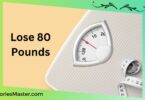Losing weight can be a challenging and overwhelming task, especially when it comes to figuring out what to eat.
With so many different diets and meal plans out there, it can be difficult to know where to start. However, creating a simple meal plan can be an effective way to help you lose weight and keep it off in the long run.
The key to a successful meal plan for weight loss is to focus on whole, nutrient-dense foods that are low in calories but high in fibre, protein and healthy fats.
This means incorporating plenty of fruits, vegetables, whole grains, lean proteins and healthy fats into your meals. It’s also important to pay attention to portion sizes and avoid processed foods and sugary drinks.
In this article, we will provide you with a simple meal plan that can help you lose weight healthily and sustainably.
By following this plan, you can take the guesswork out of meal planning and feel confident that you are making healthy choices that will support your weight loss goals.
Understanding Weight Loss
Losing weight is a common goal for many people, but it can be a challenging process. Understanding how weight loss works can help you achieve your goals.
Calories In vs. Calories Out
Weight loss is all about creating a calorie deficit. This means that you need to burn more calories than you consume. When you consume fewer calories than your body needs, it will start to use stored fat for energy, which can lead to weight loss.
Healthy Eating
Eating a healthy, balanced diet is essential for weight loss. Focus on eating plenty of fruits, vegetables, whole grains, lean proteins, and healthy fats. Avoid processed foods and sugary drinks, which are high in calories and low in nutrients.
Exercise
Exercise is another important component of weight loss. Aim for at least 30 minutes of moderate-intensity exercise most days of the week. This can include activities such as brisk walking, cycling, swimming, or dancing.
Consistency
Consistency is key when it comes to weight loss. Make small, sustainable changes to your diet and exercise routine that you can stick to long-term. Remember that weight loss is a journey, and it may take time to see results.
By understanding the basics of weight loss and making healthy lifestyle changes, you can achieve your weight loss goals and improve your overall health and well-being.
Importance of a Balanced Diet
Maintaining a balanced diet is essential for a healthy lifestyle. A balanced diet is a diet that provides all the nutrients that the body needs to function correctly. A balanced diet includes a variety of foods from all the food groups in the right proportions.
Role of Proteins
Proteins are essential for building and repairing body tissues, such as muscles, organs, and skin. They are also important for the production of enzymes, hormones, and other molecules required for the proper functioning of the body. Protein-rich foods include meat, fish, eggs, dairy products, beans, and nuts.
Role of Carbohydrates
Carbohydrates are the body’s primary source of energy. They provide the necessary fuel for the brain, muscles, and other organs to function correctly. Carbohydrates are found in foods such as bread, rice, pasta, potatoes, fruits, and vegetables.
Role of Fats
Fats are essential for the absorption of vitamins and minerals and for the production of hormones. They also provide a source of energy for the body.
It is essential to consume healthy fats, such as those found in nuts, seeds, oily fish, and avocado, and limit the intake of saturated and trans fats found in processed foods.
In conclusion, a balanced diet is crucial for maintaining a healthy weight and reducing the risk of chronic diseases. By consuming a variety of foods from all the food groups in the right proportions, the body can obtain all the necessary nutrients for optimal health.
Creating a Simple Meal Plan
Creating a simple meal plan involves not only considering calorie needs but also selecting nutrient-dense foods. Here’s how to choose nutrient-dense foods for your meal plan:
Determining Calorie Needs
Before creating a meal plan, it’s important to determine your daily calorie needs. This can be done by calculating your basal metabolic rate (BMR) and multiplying it by an activity factor. BMR is the number of calories your body burns at rest.
The activity factor takes into account your daily physical activity level.
Many online calculators can help you determine your BMR and activity factor. Once you have this information, you can calculate your daily calorie needs.
It’s important to create a calorie deficit to lose weight, but this deficit should not be too large as it can lead to negative health effects.
Choosing Nutrient-Dense Foods
When creating a meal plan, it’s important to choose nutrient-dense foods that provide the necessary vitamins and minerals your body needs. Nutrient-dense foods include fruits, vegetables, whole grains, lean proteins, and healthy fats.
It’s also important to limit processed foods, sugary drinks, and foods high in saturated and trans fats. These foods can be high in calories and low in nutrients, making it difficult to maintain a healthy weight.
Meal Timing and Frequency
Meal timing and frequency can also play a role in weight loss. Some people find it helpful to eat smaller, more frequent meals throughout the day, while others prefer larger meals with longer periods of fasting in between.
It’s important to listen to your body and find a meal plan that works for you. However, it’s generally recommended to avoid skipping meals as this can lead to overeating later in the day.
In summary, creating a simple meal plan for weight loss involves determining your daily calorie needs, choosing nutrient-dense foods, and finding a meal timing and frequency that works for you. By following these guidelines, you can create a sustainable meal plan that supports your weight loss goals.
Sample Meal Plan for a Week
Here’s how to go about it!
Day 1
- Breakfast: Oatmeal with nuts and berries
- Snack: Apple slices with almond butter
- Lunch: Grilled chicken breast with mixed vegetables
- Snack: Greek yoghurt with honey
- Dinner: Baked salmon with roasted sweet potatoes and asparagus
Day 2
- Breakfast: Scrambled eggs with spinach and whole wheat toast
- Snack: Carrot sticks with hummus
- Lunch: Turkey and avocado wrap with a side salad
- Snack: Cottage cheese with sliced peaches
- Dinner: Beef stir-fry with brown rice and mixed vegetables
Day 3
- Breakfast: Greek yoghurt with granola and mixed berries
- Snack: Hard-boiled egg with celery sticks
- Lunch: Grilled chicken salad with mixed greens and balsamic dressing
- Snack: Edamame
- Dinner: Baked chicken with roasted Brussels sprouts and sweet potato mash
Day 4
- Breakfast: Whole wheat toast with avocado and smoked salmon
- Snack: Pear slices with almond butter
- Lunch: Tuna salad with mixed greens and whole wheat crackers
- Snack: Greek yoghurt with honey and mixed nuts
- Dinner: Grilled shrimp with quinoa and mixed vegetables
Day 5
- Breakfast: Smoothie with spinach, banana, almond milk, and protein powder
- Snack: Cottage cheese with sliced tomatoes
- Lunch: Chicken and vegetable stir-fry with brown rice
- Snack: Apple slices with peanut butter
- Dinner: Baked cod with roasted carrots and green beans
Day 6
- Breakfast: Omelette with mushrooms, peppers, and whole wheat toast
- Snack: Baby carrots with hummus
- Lunch: Grilled chicken wrap with mixed greens and tzatziki sauce
- Snack: Greek yoghurt with mixed berries
- Dinner: Baked chicken with roasted broccoli and sweet potato mash
Day 7
- Breakfast: Whole wheat pancakes with mixed berries and Greek yoghurt
- Snack: Hard-boiled egg with cucumber slices
- Lunch: Turkey and cheese roll-ups with mixed greens
- Snack: Cottage cheese with sliced peaches
- Dinner: Grilled steak with roasted asparagus and quinoa
Note: Make sure to drink plenty of water throughout the day and adjust portion sizes based on your individual needs.
Exercise and Weight Loss
Exercise plays a crucial role in weight loss and overall health. Here are some additional considerations:
Importance of Exercise
Physical activity is an essential component of a healthy lifestyle. Exercise can help you lose weight, improve your overall health, and reduce your risk of chronic diseases such as diabetes and heart disease.
When it comes to weight loss, exercise can help you burn more calories and increase your metabolism, which can lead to faster weight loss.
Choosing the Right Exercise
When it comes to weight loss, not all exercises are created equal. Some exercises are more effective than others at burning calories and promoting weight loss. The best exercises for weight loss are those that are high-intensity and involve multiple muscle groups. Examples of these types of exercises include:
- Running
- Cycling
- Swimming
- High-intensity interval training (HIIT)
It’s also important to choose an exercise that you enjoy and that fits into your lifestyle. If you hate running, for example, you’re unlikely to stick with it long-term.
Instead, try different types of exercise until you find something that you enjoy and that you can realistically incorporate into your daily routine.
In summary, exercise is an important component of any weight loss plan. By choosing the right exercise and incorporating it into your daily routine, you can increase your calorie burn, improve your overall health, and achieve your weight loss goals.
Monitoring Your Progress
It’s important to track your progress when trying to lose weight. Doing so can help you stay motivated and make adjustments to your meal plan as needed. Here are some tips for monitoring your progress:
Weigh yourself regularly
Weighing yourself once a week can help you track your progress. Make sure you weigh yourself at the same time of day and wear the same clothes each time to get accurate results. Keep track of your weight in a journal or on a spreadsheet so you can see how you’re progressing over time.
Take measurements
In addition to weighing yourself, taking measurements of your waist, hips, arms, and legs can help you see how your body is changing. Use a tape measure to measure each area and record the results in your journal or spreadsheet.
Keep a food diary
Writing down everything you eat and drink can help you see where you might be consuming too many calories. Use a food diary to track your meals and snacks, including portion sizes and calorie counts. You can also use an app to help you track your food intake.
Monitor your exercise
Regular exercise can help you lose weight and improve your overall health. Keep track of your workouts in your journal or on an app. Record the type of exercise, duration, and intensity. You can also use a fitness tracker to monitor your daily activity levels.
Celebrate your successes
As you make progress towards your weight loss goals, take time to celebrate your successes. Treat yourself to a new outfit or a relaxing day at the spa. Celebrating your achievements can help you stay motivated and on track.
Addressing Potential Challenges
Losing weight can be a challenging process, both mentally and physically. It’s important to be aware of potential challenges and have strategies in place to overcome them.
Temptations and Cravings
One of the biggest challenges when trying to lose weight is resisting temptations and cravings. It’s important to remember that it’s okay to indulge in moderation, but it’s also important to have a plan in place to avoid overindulging.
To combat temptations and cravings, try the following strategies:
- Keep healthy snacks on hand, such as fruit or nuts, to satisfy cravings without derailing your progress.
- Plan your meals and snacks to avoid impulsive choices.
- Drink plenty of water to stay hydrated and curb hunger.
Plateaus
Another common challenge when trying to lose weight is hitting a plateau. This is when weight loss stalls despite continued efforts.
To overcome a plateau, try the following strategies:
- Re-evaluate your calorie intake and ensure you’re still in a calorie deficit.
- Increase your physical activity to burn more calories.
- Incorporate strength training to build muscle, which can boost metabolism and aid in weight loss.
Social Situations
Social situations can also present challenges when trying to lose weight. It’s important to find a balance between enjoying social events and sticking to your goals.
To navigate social situations, try the following strategies:
- Plan and research menus to make healthy choices.
- Practice portion control and avoid overeating.
- Don’t be afraid to say no to food or drinks that don’t align with your goals.
By being aware of potential challenges and having strategies in place to overcome them, you can set yourself up for success on your weight loss journey.
Simple Meal Plan to Lose Weight – Conclusion
In conclusion, following a simple meal plan can be an effective way to lose weight. By focusing on whole, nutrient-dense foods and avoiding processed and high-calorie options, you can create a calorie deficit and achieve your weight loss goals.
It’s important to note that everyone’s nutritional needs are different, so it’s essential to consult with a healthcare professional or registered dietitian before starting any new diet or meal plan.
Additionally, incorporating regular physical activity and getting enough sleep can also support weight loss efforts.
Some tips to keep in mind when creating a simple meal plan for weight loss include:
- Prioritising protein-rich foods such as lean meats, fish, eggs, beans, and legumes
- Including plenty of fruits and vegetables for fibre, vitamins, and minerals
- Choosing whole grains over refined grains
- Limiting added sugars and unhealthy fats
- Staying hydrated by drinking plenty of water
By following these guidelines and making small, sustainable changes to your eating habits, you can achieve your weight loss goals and improve your overall health and well-being.









